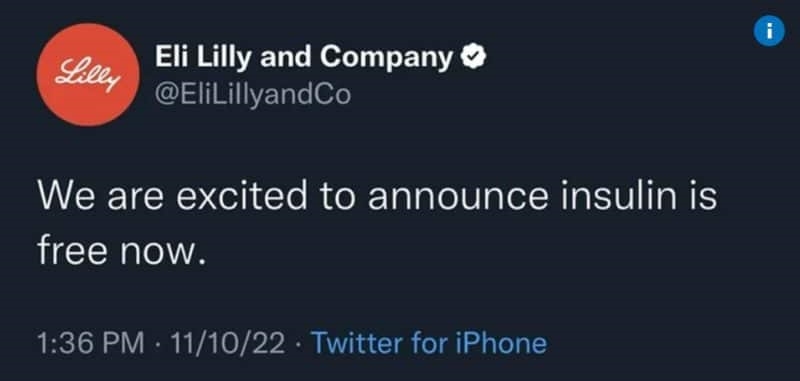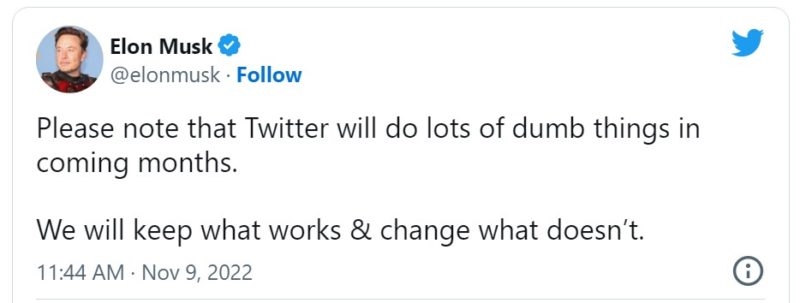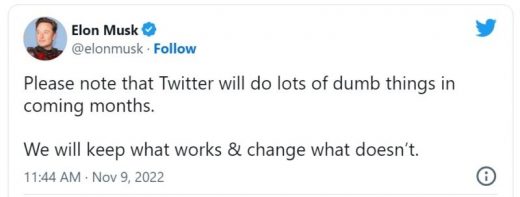Many advertisers still using Twitter despite Musk’s chaos
Smaller advertisers have stuck with Twitter because its audience and engagement numbers are still good.
Elon Musk’s purchase of Twitter caused the biggest brands to pause their advertising on the social media platform. However, many smaller ones remain and are still glad to be there. Kaela Green, VP of paid social at Basis Technologies, says that’s because both the audience and the content protections are still there.
“It’s really just the small number [of advertisers] who are making the decision to maybe pause until there’s more certainty around the direction of the platform and it has more to do with reputation than performance,” says Green. “But that’s where that’s where the hit is coming from. It’s the big names who are pulling their multi-million dollar budgets out of the platform.”
She says that all the sound and fury have so far signified nothing when it comes to changes in either Twitter’s product or audience.
No changes in audience or engagement
“Since Elon’s takeover, we’ve seen a lot of the press and all of the noise around what’s happening at Twitter,” says Green. “But we haven’t seen any true tangible shift in the way that the media connects to users, in the way that it performs for the brands that we work with on the platform.”
Basis is a media automation and intelligence platform and Green says they have about 50 clients who advertise on Twitter. She has advised them to continue doing so because it still performs well and she doesn’t believe it’s much riskier than it was before Musk’s purchase.
“The reality of where it stands is there have been no changes to content moderation policies,” she says. “There have been no changes to brand safety, to the algorithms and tools that control and monitor, and make sure that the inventory maintains currency.”
Green doubts that will change. She points out that Yoel Roth, Twitter’s head of safety and integrity, said his department has mostly been spared by Twitter’s huge layoffs. (This interview was conducted the day before Roth resigned from Twitter.)
“Elon understands that that is important,” she says. “And for him to have a revenue stream, he does need to serve and deliver on brand safety for advertisers. That’s the big revenue driver.”
The problems are coming from the CEO
Unfortunately, Musk himself changed one of those protections, the blue check verification system. That change allowed users to pass themselves off as some major brands, most notably Eli Lilly.

That tweet caused the pharmaceutical maker’s stock to drop 4.37% on Friday — erasing over $ 15 billion in market capitalization.
Green says Musk’s desire to make that system a revenue source moved it too far away from its purpose as a singular, protected voice for brands to use. “Ideally, Elon moves swiftly and vigorously to enhance the program to provide more true verification measures before allowing someone to pay for the blue check.”
Two days before the Eli Lilly fiasco Musk warned that more mistakes would be made.

While he is now spending a lot of time trying to reassure advertisers, the promise of more problems can’t help.
However, all of the organizational chaos has had little impact on the number of people using Twitter. Green points out that while some big name celebrities have left, there’s been no mass exodus. Nor has it changed how people interact with advertisers there.
It still has what advertisers want
“The engagement rates that we’re seeing … have maintained pretty steady and in some cases it’s even increased and not necessarily in a negative way,” says Green. “The engagement is not due to some of the negativity or concern around the platform.”
The stability of audience size and engagement may be Twitter’s biggest strength right now. Another is that it occupies a unique place. Although some users talk about going to another platform — like Mastodon, neither that nor any other social media platform provides the immediacy and real-time response Twitter does.
“Sure, advertisers can pull away,” says Green, “but [they] are never going to want to if they’re still getting what they want out of the deal.”
However, even if all the advertisers returned today it wouldn’t fix the company’s core problem: It doesn’t make money. Twitter has turned a profit only twice in the last 10 years.
Musk has made that harder to do. Last April, when he agreed to buy the company, the market was hot. He paid $ 44 billion, twice its market value at a time when social media stocks were overvalued. Since the amount being spent on digital advertising has fallen off a cliff. If Twitter somehow brought in as much money as it did last year, it wouldn’t be nearly enough to service the debt Musk has saddled it with.
The post Many advertisers still using Twitter despite Musk’s chaos appeared first on MarTech.
(26)



